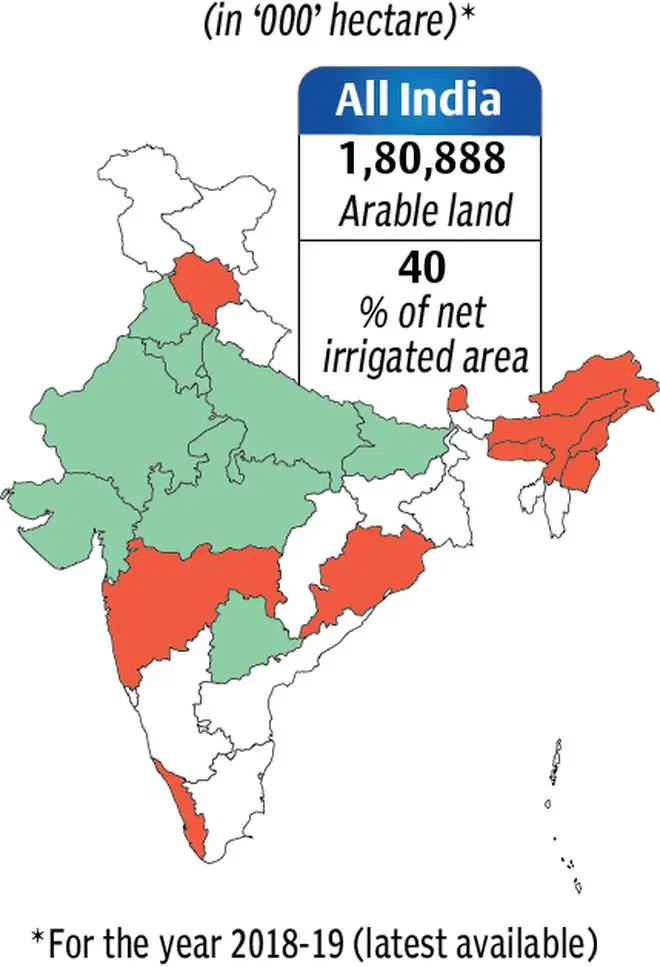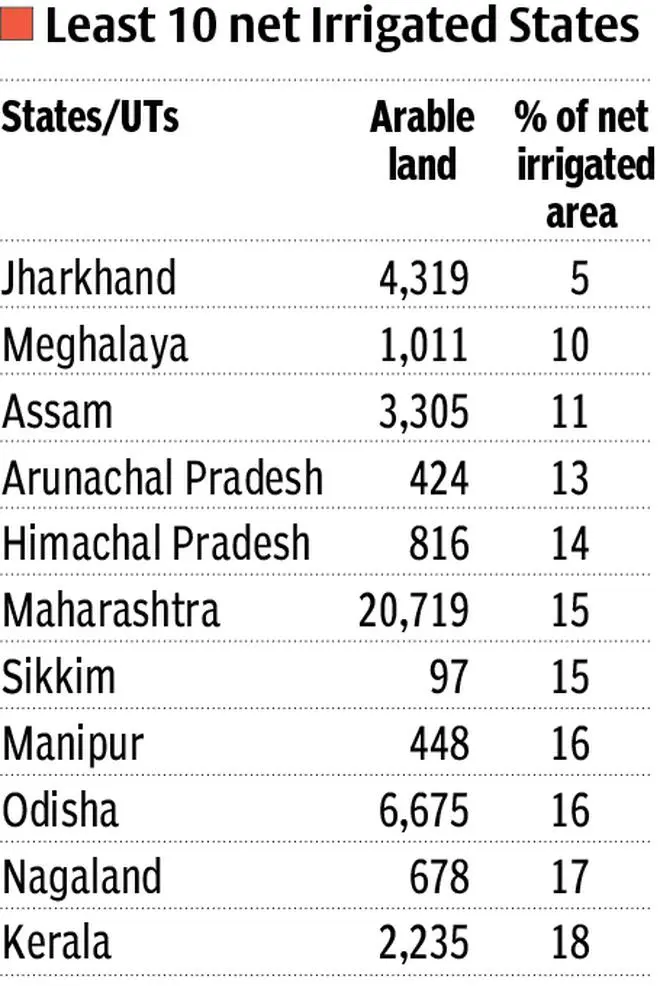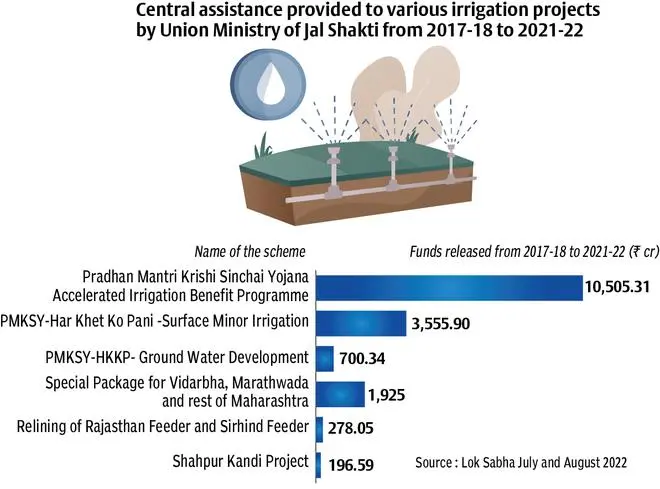As per the latest data available with the Union government, against the total agricultural land of 1,80,888 thousand hectares, the cultivated land in the country is 1,53,888 thousand hectares. Of the total available agricultural land 71,554 thousand hectares or only 40 per cent is irrigated.
As the Centre is executing schemes to double farmers’ income farmers in many States continue to depend on monsoon for cultivation. In fact, some of the major States including Maharashtra and Jharkhand don’t even have 20 per cent of arable land irrigated.

Punjab is the only State which has nearly achieved 100 per cent net irrigation followed by Haryana. Uttar Pradesh, Madhya Pradesh, and West Bengal are among the five top States with more than 50 per cent net irrigated area.
Interestingly, per the government data 60 per cent of the net irrigated area in the country is serviced through groundwater. The rate of extraction of groundwater is more than 100 per cent in Delhi, Haryana, Punjab and Rajasthan. Economic Surveys and experts have been suggesting that increased coverage under micro-irrigation can be the most effective mode of water conservation and these States need to focus on both medium and long-term groundwater recharge and conservation plans.
In States like Maharashtra, the local government is focusing on building new dams but has not taken care of building a canal network to take the water to farms.


“ Government is talking about doubling of farmers’ income but here we depend on monsoon showers to survive,” says Dwarkatai Waghmare, a farmer from Beed district in Maharashtra. She adds that thousands of people migrate in search of livelihood from drought-prone areas in absence of good monsoon.
The Directorate of Economics and Statistics, Ministry of Agriculture and Farmers Welfare, estimates percentage of the net un-irrigated area over net area sown in the country to be about 48.65 per cent. “ Further, it is estimated that 40 per cent of the net sown area is expected to remain rain-fed even after attainment of full irrigation potential of the country,” the Ministry of Jal Shakti stated in February.
“ In this case, the government has to decide about a long-term policy for farmers whose land will never come under irrigation,” says farmer leader Sampatrao Pawar.
Centre’s plan
Water is a State subject and local governments take up projects for providing irrigation in rain-fed regions under their jurisdiction. According to the Union government, its role is limited to being catalytic, providing technical support, and in some cases partial financial assistance in terms of the existing schemes under implementation.

A centrally sponsored scheme Pradhan Mantri Krishi Sinchayee Yojana (PMKSY) was launched in 2015-16. The aim is to enhance physical access of water on farm and expand cultivable areas under assured irrigation, improve on-farm water use efficiency, and introduce sustainable water conservation practices.
Extension of PMKSY till 2025-26 has been approved with an overall outlay of ₹93,068.56 crore (central assistance of ₹37,454 crore, debt servicing to NABARD for ₹20,434.56 crore and State share being ₹35,180 crore).







Comments
Comments have to be in English, and in full sentences. They cannot be abusive or personal. Please abide by our community guidelines for posting your comments.
We have migrated to a new commenting platform. If you are already a registered user of TheHindu Businessline and logged in, you may continue to engage with our articles. If you do not have an account please register and login to post comments. Users can access their older comments by logging into their accounts on Vuukle.